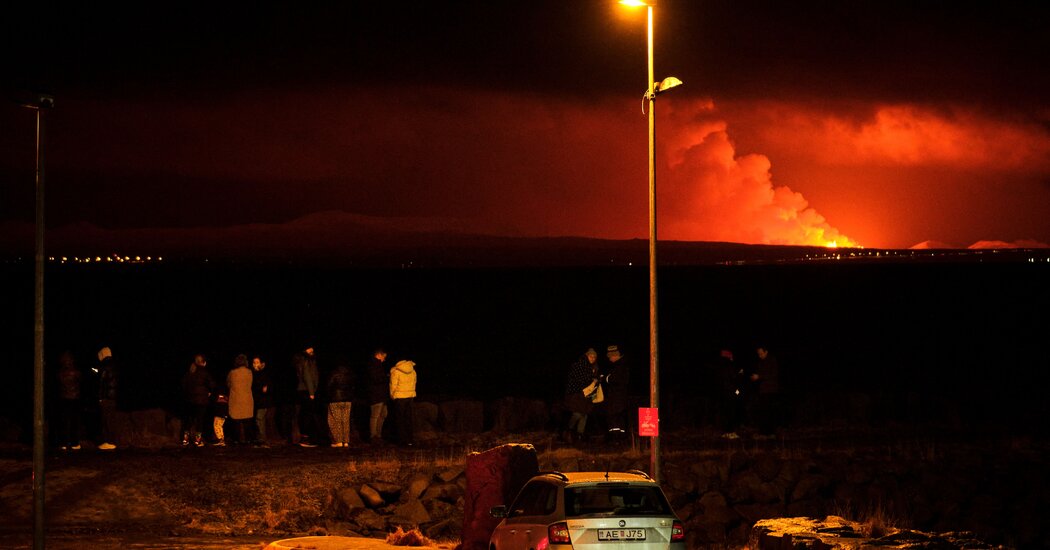After weeks of anticipation, a volcanic eruption in Iceland’s most populated area sent lava spewing into the night sky late Monday and pushed the authorities into action mode Tuesday. The eruption, which was larger than volcanologists had predicted, happened not far from an evacuated town and a power plant.
Iceland is no stranger to volcanic eruptions, and the authorities quickly moved to reassure the public that there was no immediate threat to life. “We are prepared and remain vigilant,” President Gudni Johannesson, wrote on the social platform X.
They also stressed that travel was not affected — a clear attempt to fend off concerns of a repeat of 2010, when an ash cloud from another eruption in Iceland snarled flights across Europe.
Here’s what to know about the eruption.
What happened?
The eruption began late Monday, with fountains of lava pouring from a fissure on the Reykjanes Peninsula, the most populated region in Iceland and home to its capital, Reykjavik. Helicopter video shared by Iceland’s Civil Defense showed steam rising from a glowing, snaking river of lava.
Volcanologists initially said that the eruption had occurred in one of the worst possible locations. The fissure, which is about 2.5 miles long, is not far from the Svartsengi power plant, a geothermal facility. And it is just under two miles from Grindavik, a town of more than 3,500 that was evacuated last month after heightened seismic activity prompted concerns that an eruption was likely.
But after flying over the eruption site, volcanologists said that the immediate situation appeared less dire than initially feared.
Are people at risk?
Volcanologists noted that the direction of the lava’s flow was unpredictable. And although the Icelandic Meteorological Office said on Tuesday morning that the eruption’s “intensity” was decreasing, it was not immediately clear how long it would go on.
“The fact that the activity is decreasing already is not an indication of how long the eruption will last, but rather that the eruption is reaching a state of equilibrium,” the Meteorological Office said in a statement.
Yet because the affected area had previously been evacuated, the eruption “does not pose immediate threat to people,” Iceland’s tourist board said in a statement on Tuesday morning.
The area was closed to traffic, and the risk to nearby energy infrastructure was being assessed, Iceland’s government added in a statement.
The authorities nevertheless warned against…
Click Here to Read the Full Original Article at NYT > Travel…
